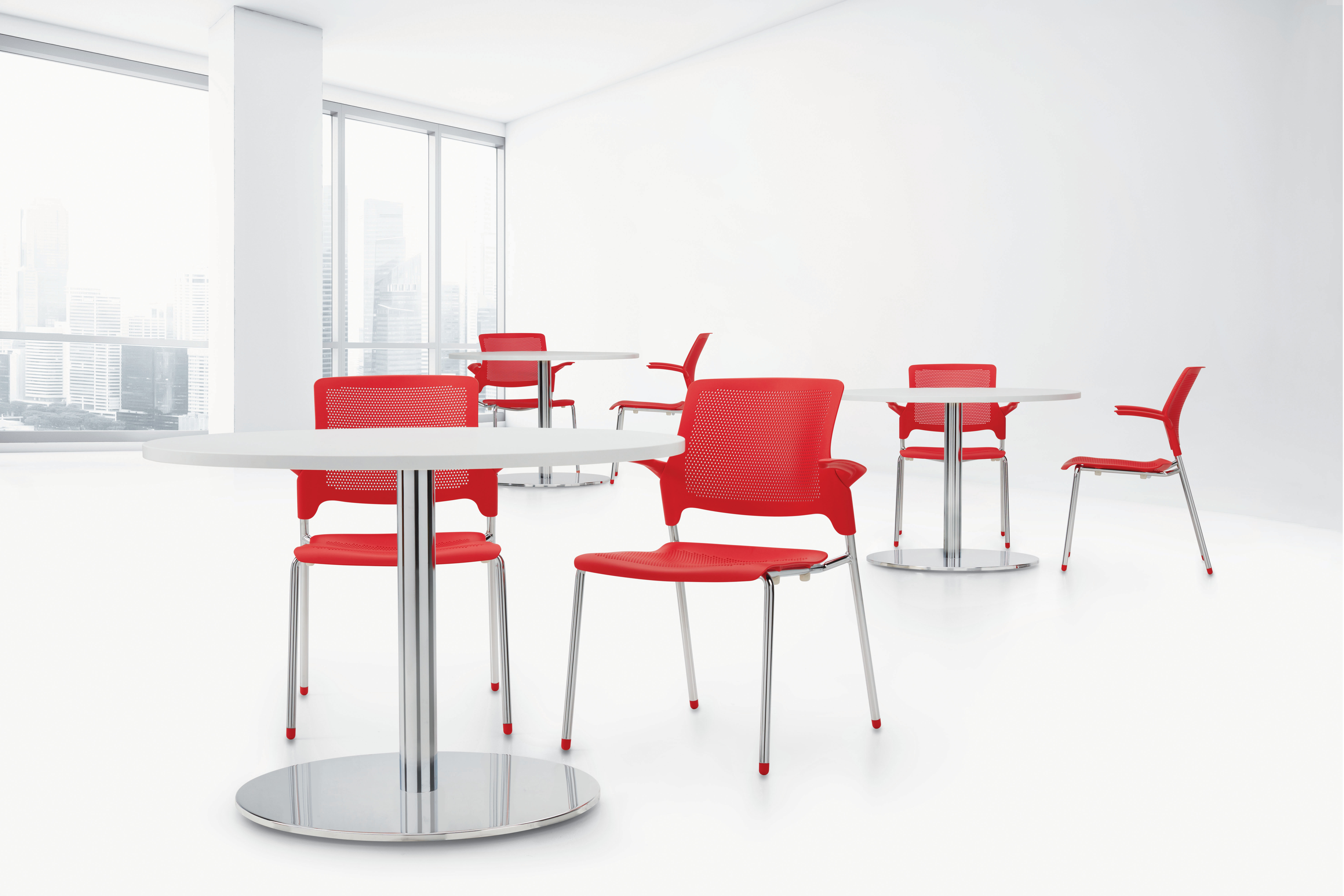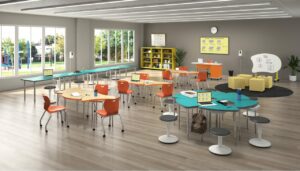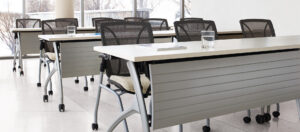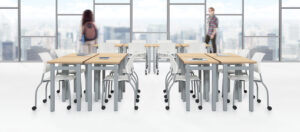Education
Today’s classrooms look very different from those of the past. Students do not necessarily sit in rows of desks; teachers are as often working alongside students instead of lecturing in front of them. In many schools, students are simultaneously conducting multiple activities within the same classroom. At times, some students may be engaged in individual activities while at the same time others they are in small groups collaborations.
In addition, many schools have provided laptops for every learner. Integrating technology solutions into both the teaching curriculum as well as the physical learning tools have become critical to providing and ideal 21st Century learning environments. Classroom’s today need to embrace the variety of places, ideas, and people and provide flexibility and adaptability that support their current learning activities.
Student activities often require very different physical settings. The optimum learning space will enable seamless transition from one subject or activity to another.
In today’s classrooms each student often learns best in very in differing ways. As a result, the ideal classroom should enable the students access different learning settings that engage their senses (sight, sound, feel etc.) conducive more effective learning experience.
To be prepared for the world of the 21st century, students need to be inspired. Peers, teachers, educators, parents, entrepreneurs, and civic leaders and community members are more frequently involved in the lesson plans and coaching of our students. Ultimately offering 21st Century Learning solutions will maximize the utilization of the physical settings and tools to enable all the education influencers to be more engaging and inspiring to our students.
Our intended goals are to encourage students to become more engaged in the learning process and to become intellectual risk-takers and creative problem solvers.
There is no single right answer to developing a 21st century learning environment but expanding our approach beyond the spatial and traditional lecture settings will help us truly provide environments that support learning anytime, anywhere.







